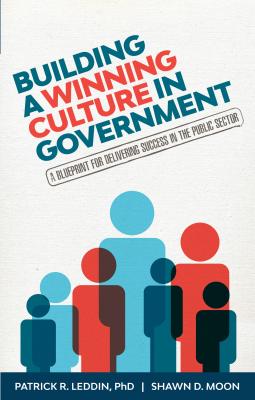Building A Winning Culture In Government. Patrick R. Leddin
Читать онлайн.| Название | Building A Winning Culture In Government |
|---|---|
| Автор произведения | Patrick R. Leddin |
| Жанр | Экономика |
| Серия | |
| Издательство | Экономика |
| Год выпуска | 0 |
| isbn | 9781633537651 |
The 4 Disciplines and Team Engagement
The 4 Disciplines Takes Flight With the U.S. Navy
Practice 3: Unleash Productivity
Unleashing the Power of People
Twenty-First-Century Productivity Barriers
Unleashing Productivity: Instructions for Downloading
Trust—A Performance Multiplier
How to Build It: The 5 Waves of Trust
Trust Is Strengthened by How You Act
Building Trust: Instructions for Downloading
Practice 5: Create Intense Loyalty
“Satisfaction”—The Old Paradigm
“Intense Loyalty”—The New Paradigm
Powerful Lead Measures: Fascinated People
A Loss of Productivity: Passionless People
Employee Loyalty Leads to Customer Loyalty
Creating Intense Loyalty: Instructions for Downloading
Conclusion: The Job for You to Do Now Starts Today
Peter Drucker famously said, “Culture eats strategy for breakfast.” In doing so, he identified a phenomenon that leaders have struggled with throughout history: It is one thing to have a great strategy, but it’s quite another to accomplish it. Never has this statement been more true—or more challenging—than for today’s government organizations.
Whether operating at the federal, state, or local level, government organizations face increased media scrutiny, reduced funding, and the many challenges of moving large, multi-layered, and highly regulated organizations. It’s no surprise that many government organizations report that their employees are less engaged than ever and that leaders feel helpless to change the situation.
In many cases, employees and leaders are caught in a vicious cycle. Performance declines, scrutiny increases, and employee paralysis ensues. Repeat.
How do you break this cycle?
You change the mindset from “leaders are a select few in the organization” to “everyone can and should be a leader.” This simple, yet significant shift is key to creating an effective government organization in the twenty-first century. If every member of the organization is leading from where they are, it also allows government organizations to leverage the power of five highly effective practices:
1 Find the voice of the organization and connect and align accordingly (a.k.a. lead with purpose).
2 Execute your strategy with excellence.
3 Unleash and engage people to do infinitely more than they imagined they could.
4 Be the most trusted organization possible.
5 Create fervent loyalty with all stakeholders.
For years, FranklinCovey has helped government organizations employ these practices, develop leaders at every level, create results, and ignite their ultimate mission essential—a winning culture. We have worked with thousands of teams and hundreds of organizations at every level of government. Now we want to help you drive mission success by creating a winning culture of your own.
In this book we discuss the challenge and opportunity associated with building a powerful, winning culture within government and frame the paradigm of “leadership at all levels.” We review in some depth the five practices you need to create this culture.
Leaders are a significant leverage point for any team or organization. What the leaders say and how they behave represent an organization’s single largest opportunity for affecting change. Perhaps you are a leader with responsibility for a team, agency, or division, or perhaps you don’t have any formal direct reports. Either way, you can be a force for change, for creating engagement, and—ultimately—for getting the most important things done.
The great cultural anthropologist Margaret Mead once said, “Never doubt that a small group of thoughtful, committed citizens can change the world; indeed, it’s the only thing that ever has.”
Our goal with this book is not to help you change the world. It is to help you create lasting change within your own circles of influence with the knowledge that your influence can grow over time to become truly significant. Our goal with this book is to help you change your world. We invite you to begin the journey.
An Increasingly Pressurized Environment
The challenge of
